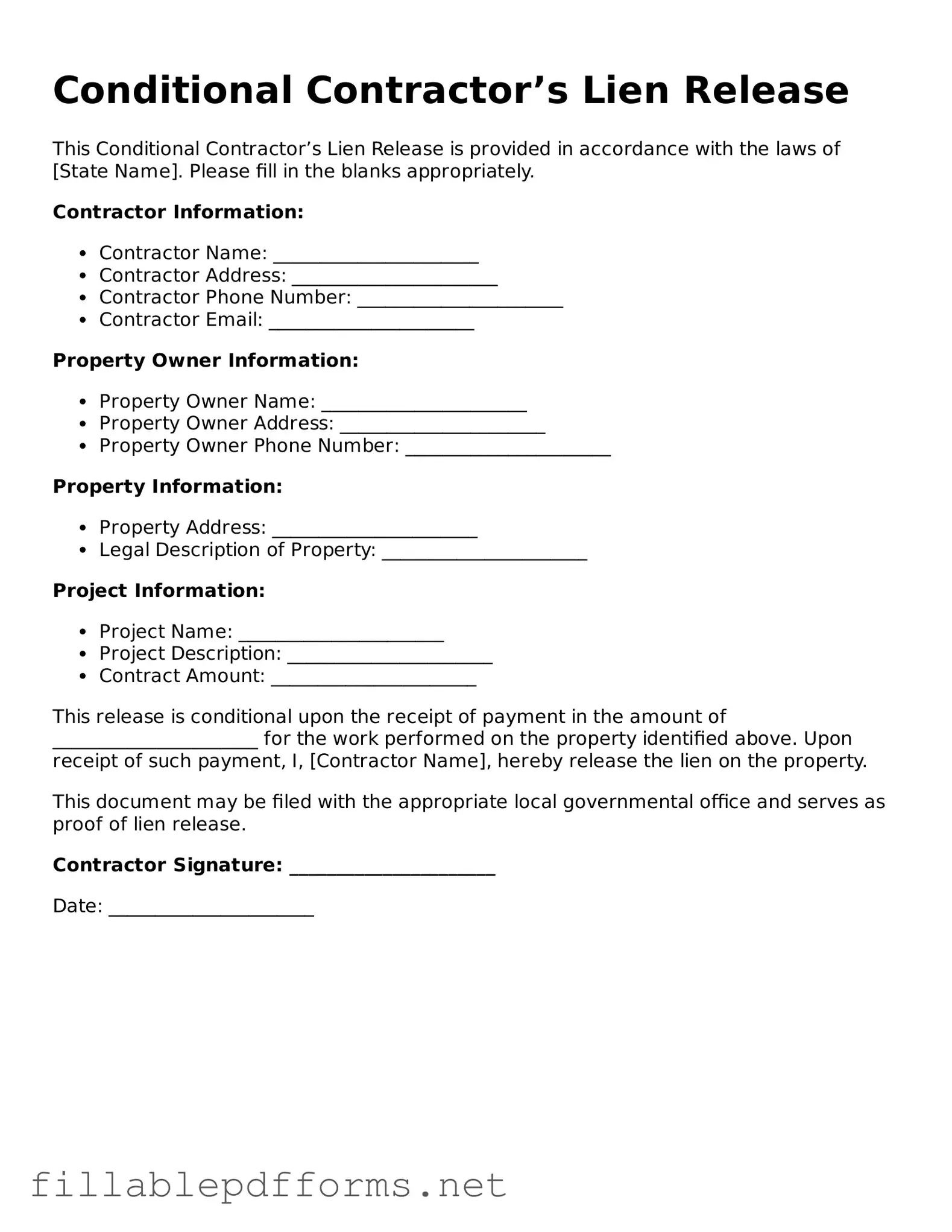Blank Conditional Contractor’s Lien Release Template
The Conditional Contractor’s Lien Release form is a legal document that allows contractors to relinquish their right to file a lien against a property, contingent upon receiving payment for their services. This form serves as a protective measure for property owners, ensuring that they are not held liable for unpaid work once payment is made. Understanding the nuances of this form is essential for both contractors and property owners to navigate their financial responsibilities effectively.
Launch Editor Here
